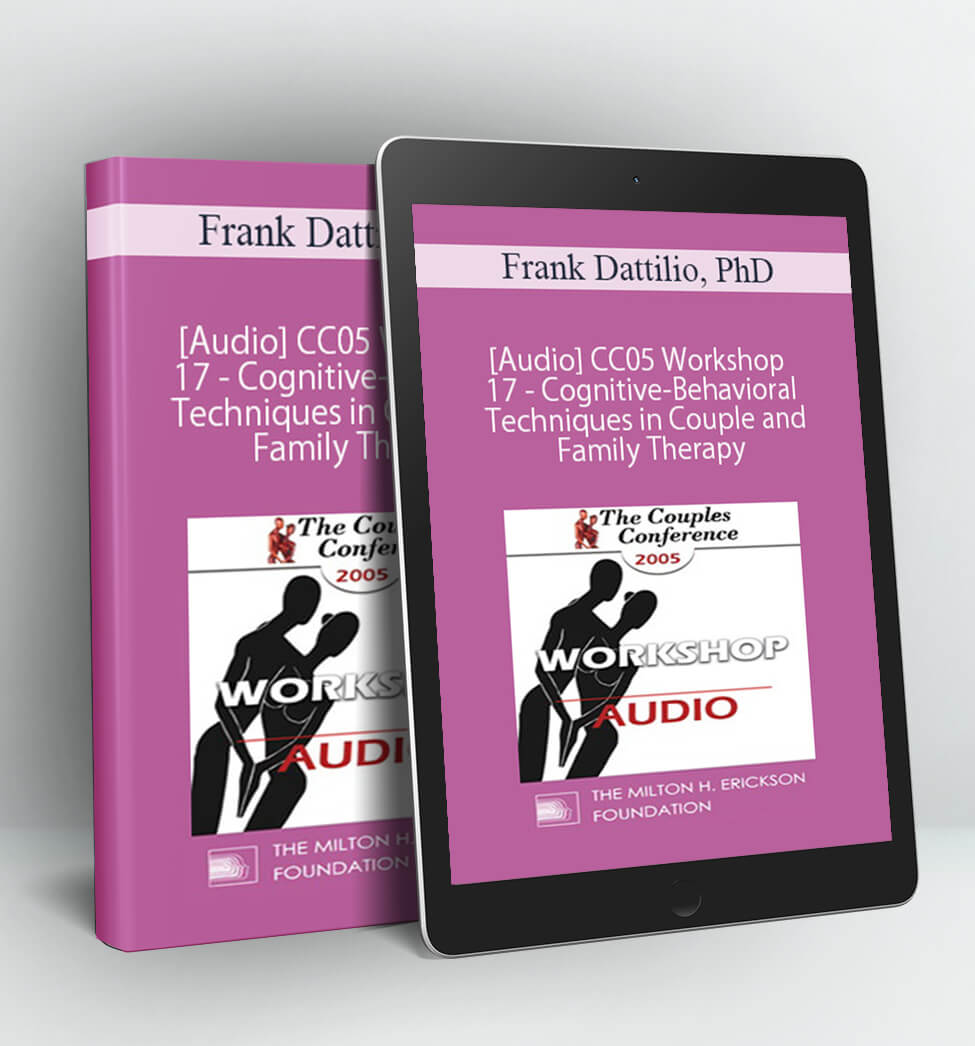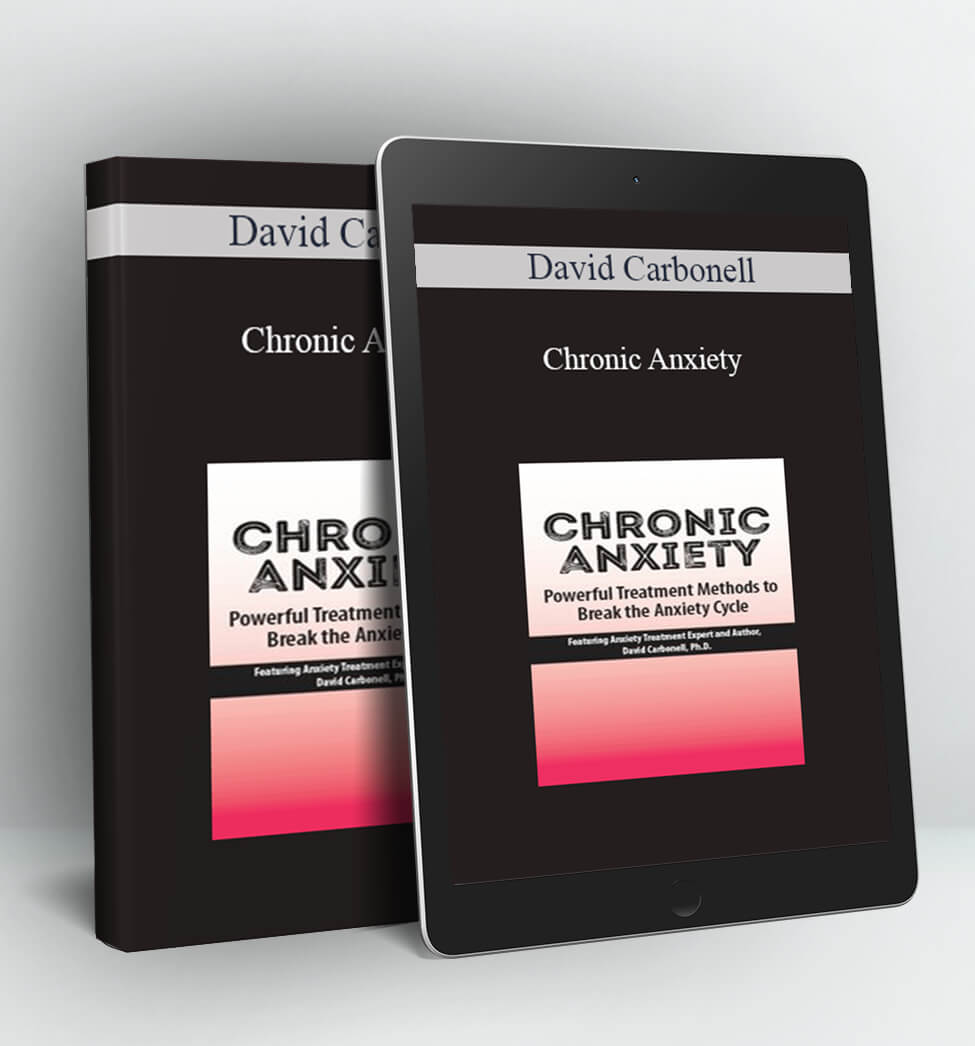CHRONIC ANXIETY: POWERFUL TREATMENT METHODS TO BREAK THE ANXIETY CYCLE – DAVID CARBONELL
Chronic anxiety disorders all involve a “threat” that doesn’t occur. Panic attacks don’t kill, obsessive doubts about the stove don’t cause fires, social anxiety doesn’t lead to disgrace and isolation, worry doesn’t lead to insanity. The feared outcomes recede into the future the way an optical illusion recedes into the horizon.
Why are anxiety disorders so powerfully chronic? It’s because chronically anxious clients get tricked by their own efforts to avoid, distract from, and protect against the perceived dangers. When the dangers don’t come to pass, they believe they had a narrow escape from a terrible calamity, and feel more vulnerable going forward rather than less. They become increasingly afraid of more and more improbable events. What we call the “anxiety disorders” could be more accurately termed “the disorders of excessive self-protection”, because that’s how they function!
How can you help them recover? By teaching them how to disengage from the self-protective behaviors that trick them. Attend this workshop and learn how to help your anxious clients find the evidence of this in their own lives, so you can help them approach and accept, rather than avoid and resist, the experience of anxiety.
This recording will teach you to empower your anxious clients to see themselves as good, capable people who have been fooled by anxiety, rather than defective people who need protection. Discover how to motivate your clients to seek out, rather than avoid, the corrective experiences they need for recovery. Take home effective strategies from Acceptance and Commitment Therapy, Paradoxical Therapy, Metacognitive Therapy, and traditional CBT to help your clients rediscover the hopes and dreams they had for life before they were derailed by their struggle against anxiety. You, and your clients, will be glad you did!
- Communicate how anxiety can impede clients’ ability to engage in treatment and utilize clinical strategies to alleviate this issue.
- Analyze the efficacy of various anxiety treatment approaches, including CBT, ACT, Metacognitive Therapy and paradoxical methods.
- Implement clinical techniques to address clients’ thoughts, feelings and behavior that underlie anxiety, including shame, blame and excessive self-protection.
- Teach a simple breathing technique that both decreases acute anxiety symptoms and serves as a metaphor for management of future anxiety.
- Apply simple yet effective clinical interventions in sessions to help clients acquire a new perspective of chronic anxiety and a more adaptive approach to managing symptoms.
- Utilize specific behavioral interventions to decrease symptoms of Panic Disorder, Social Anxiety Disorder, Generalized Anxiety Disorder, and Specific Phobias.
Treatment Strategies Prepare Clients for Treatment
- Disarm the fear of treatment
- Discover the Anxiety Trick
- Experiment with exposure and acceptance
- Empathy requires a phobic viewpoint
Schools of Treatment
- CBT methods to review outcomes and plan experiments
- ACT methods to promote acceptance of discomfort and action
- Metacognitive Therapy methods to disengage from arguing with anxious thoughts
- Paradoxical methods to encourage exposure
Use Your Body
- Belly breathing the right way
- Don’t take it lying down
- What’s your job when you’re anxious?
- Replace destructive protection with valued actions
- The rules of opposites
Interacting with Your Mind
- The problem with correcting thoughts
- Uncle Argument at the banquet
- Disengage from “what if?”
- Change your relationship with worry
Train Your Brain
- Work with your amygdala
- The real purpose of exposure
- Being AWARE
Treating Anxiety Disorders Panic Disorder
- What maintains it? How to end it
- Hope and help for demoralized clients
- Get unstuck from the “Why?” questions
- 3 powerful questions
Social Anxiety Disorder
- The self-centered phobia
- Whose thoughts bother you?
- Secrecy is a safety behavior
- Would you like to try an experiment?
- Compassion for self
Generalized Anxiety Disorder
- The two types of worry
- The Mad Libs of anxiety
- Paradoxical thought experiments
- Don’t even think of thought stopping
- Worry appointments and exposure methods for worry
Specific Phobias
- In vivo exposure for:
- Fear of flying
- Fear of public speaking
Research Limitations and Risks of Psychotherapeutic Approaches
Tag: Chronic Anxiety: Powerful Treatment Methods to Break the Anxiety Cycle – David Carbonell Review. Chronic Anxiety: Powerful Treatment Methods to Break the Anxiety Cycle – David Carbonell download. Chronic Anxiety: Powerful Treatment Methods to Break the Anxiety Cycle – David Carbonell discount.





